The former pesticide storage facility is located in the city of Balikchy.
The former pesticide storage facility is located in the city of Balakchy, 300 meters from Lake Issyk-Kul. Within 200 meters of the site, there is a residential area. Despite the presence of gates at the western entrance and the facility being guarded, there are reports that agricultural animals occasionally graze on the premises.
This large storage and distribution center was likely built in the 1970s and its use ceased with the collapse of the Soviet Union. The facility is now privately owned, and several buildings on the site remain untouched.
In the southwestern corner of the site, there is a large building – a coal storage facility. On the premises, two pesticide barrels are in unsatisfactory condition. It is believed that the barrels are either empty or partially filled, but it has been reported that barrels containing liquid pesticides are stored in the smaller of the two warehouses owned, adjacent to the coal storage. The condition of the building is particularly poor in the long narrow warehouse to the north, where in some places the walls are crumbling and the roof has gaping holes. There is staining on the floor and around the foundation, and the condition of the foundation is deteriorating. In one area, near the coal storage, there was a stockpile of unidentified light-colored powder, possibly fertilizer residues, but this has not been confirmed.
The remaining buildings include a coal storage warehouse in the southwest; two buildings for storing pesticide barrels, one north of the coal storage building and one to the east; and two reportedly empty buildings to the east. Site characteristics (topography, soil cover, drainage, surface waters, ecological features) The terrain is flat, with runoff to the west towards the street and a general slope to the south towards the lake. Direct runoff to the south of the site crosses over a railway track that protrudes above the ground surface. The land is generally bare with weedy vegetation. Lake Issyk-Kul is an important ecological feature of Kyrgyzstan.
Land use and development (nearest neighbors and/or enterprises, agricultural land, grazing) The land is used for residential purposes to the north and west; and for industrial purposes to the east and south. Are there containers with pesticides? The large pesticide storage facility north of the coal storage is divided into several rooms, each containing numerous steel barrels with pesticides in poor condition. Other barrels containing liquid pesticides are reportedly stored in a smaller warehouse to the east of the coal storage. Visible signs of land contamination and/or odor? Staining on the floor and walls has been observed throughout the large warehouse. East of the coal storage, light-colored residues are visible on the bare ground. Pesticide odors are evident and reportedly become particularly strong in warm weather.
Conclusions
There is a risk of further pesticide contamination of the environment due to the poor condition of the pesticide containers and the buildings in which they are stored. There are potentially vulnerable receptors to the north and west, and the ecologically significant Issyk-Kul to the south. Ensuring the safety of the pesticide residues will be the first step in any conservation efforts at this site.
This large storage and distribution center was likely built in the 1970s and its use ceased with the collapse of the Soviet Union. The facility is now privately owned, and several buildings on the site remain untouched.
In the southwestern corner of the site, there is a large building – a coal storage facility. On the premises, two pesticide barrels are in unsatisfactory condition. It is believed that the barrels are either empty or partially filled, but it has been reported that barrels containing liquid pesticides are stored in the smaller of the two warehouses owned, adjacent to the coal storage. The condition of the building is particularly poor in the long narrow warehouse to the north, where in some places the walls are crumbling and the roof has gaping holes. There is staining on the floor and around the foundation, and the condition of the foundation is deteriorating. In one area, near the coal storage, there was a stockpile of unidentified light-colored powder, possibly fertilizer residues, but this has not been confirmed.
The remaining buildings include a coal storage warehouse in the southwest; two buildings for storing pesticide barrels, one north of the coal storage building and one to the east; and two reportedly empty buildings to the east. Site characteristics (topography, soil cover, drainage, surface waters, ecological features) The terrain is flat, with runoff to the west towards the street and a general slope to the south towards the lake. Direct runoff to the south of the site crosses over a railway track that protrudes above the ground surface. The land is generally bare with weedy vegetation. Lake Issyk-Kul is an important ecological feature of Kyrgyzstan.
Land use and development (nearest neighbors and/or enterprises, agricultural land, grazing) The land is used for residential purposes to the north and west; and for industrial purposes to the east and south. Are there containers with pesticides? The large pesticide storage facility north of the coal storage is divided into several rooms, each containing numerous steel barrels with pesticides in poor condition. Other barrels containing liquid pesticides are reportedly stored in a smaller warehouse to the east of the coal storage. Visible signs of land contamination and/or odor? Staining on the floor and walls has been observed throughout the large warehouse. East of the coal storage, light-colored residues are visible on the bare ground. Pesticide odors are evident and reportedly become particularly strong in warm weather.
Conclusions
There is a risk of further pesticide contamination of the environment due to the poor condition of the pesticide containers and the buildings in which they are stored. There are potentially vulnerable receptors to the north and west, and the ecologically significant Issyk-Kul to the south. Ensuring the safety of the pesticide residues will be the first step in any conservation efforts at this site.

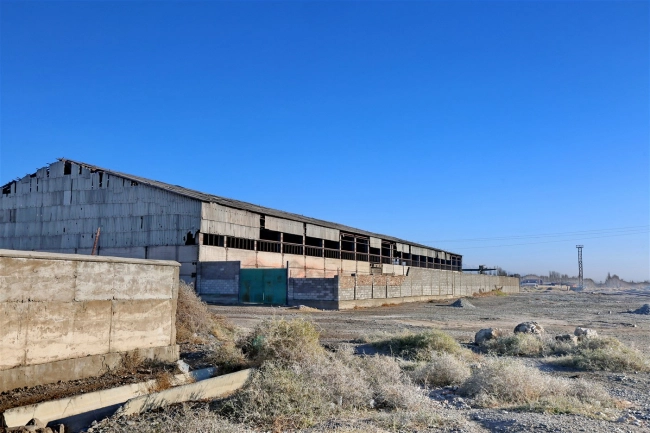
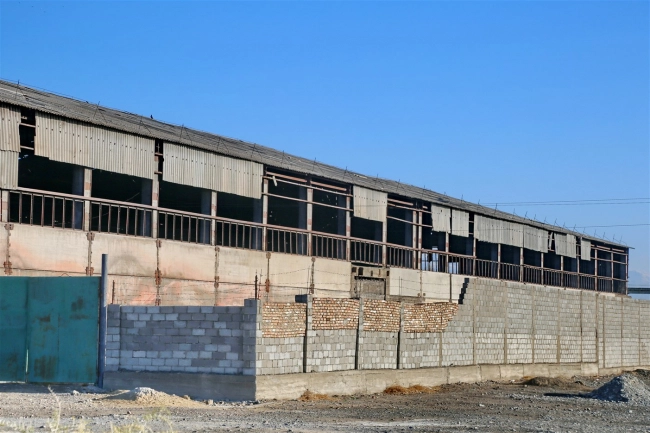
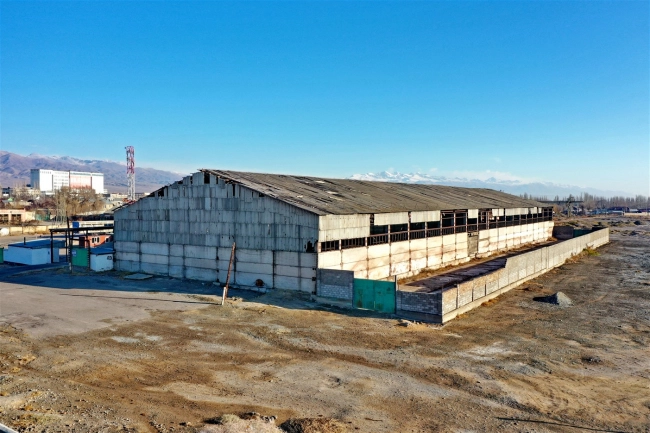
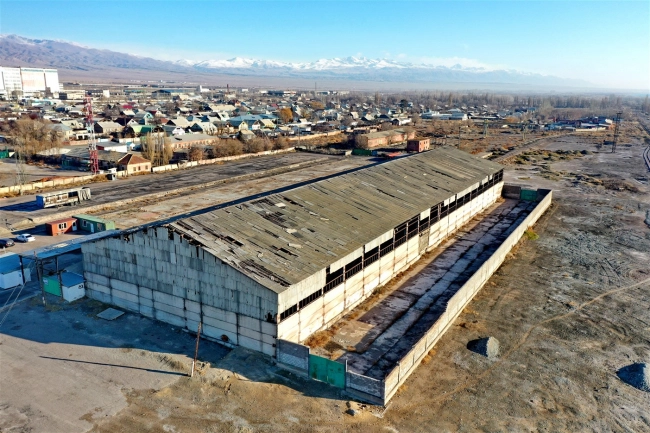
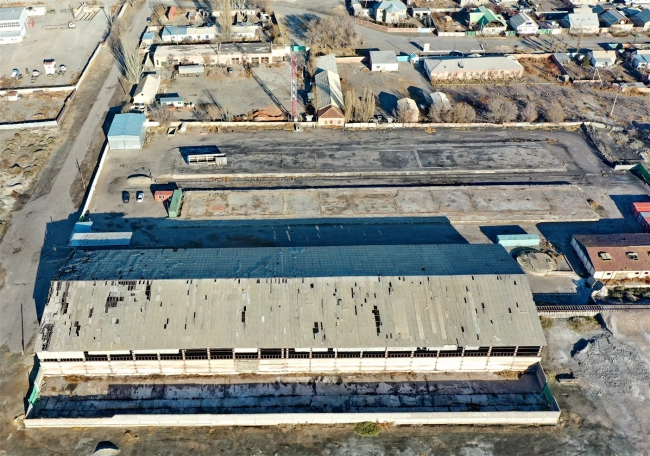
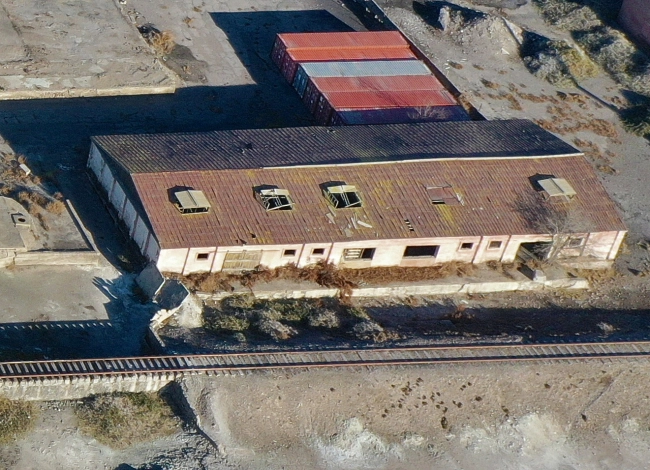
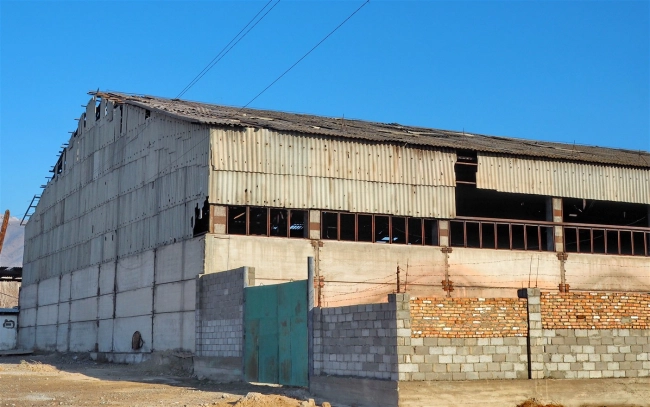



















Attention: Information based on submitted complaints